| True potato seed information and growing instructions |
| These seeds are likely to produce some varieties with unsafe levels of potato glycoalkaloids |
97H32-14 is a breeding line that was developed beginning in 1993 by Kazuyoshi Hosaka of Obihiro Univerisity in collaboration with other potato researchers. The development of this family of potatoes still continues. 97H32-14 carries the S locus inhibitor (Sli) gene introduced from the wild potato species Solanum chacoense. The pedigree is (domesticated diploid x (S. chacoense x domesticated diploid)) then two generations of self pollination and one generation of sibling mating. It has a 75% genetic contribution from a domesticated diploid potato and 25% from S. chacoense. This variety has a sibling, 97H32-6, that is more commonly used because it passes the Sli gene to progeny at a higher rate. When I grew both and compared, I found the tubers and total yields were generally larger with this variety in crosses with domesticated diploids.
Diploid domesticated potatoes are self-incompatible, so they cannot be bred to a homozygous state, which would allow for more predictable breeding and the possibility of varieties that grow true from TPS. By introducing the Sli gene, it becomes possible to self pollinate diploid potatoes. The number of generations that they can be selfed is usually limited (they eventually become infertile), so you shouldn’t expect to be able to breed to stability, but you can breed for increased homozygosity and more predictable performance in crosses (particularly with another selfed variety). It is also possible that, if you find just the right starting material, it might be possible to breed it to stability.
It is worth noting that the Sli gene does not overcome the male sterility imposed by type T cytoplasm and, therefore, cannot be used to restore fertility in diploids that were derived from haploid breeding with modern potato varieties.
I put the scary glycoalkaloid warning on this one because it has a recent wild ancestor. I have not actually found any progeny with bitter tubers yet.
Culinary Traits
97H32-14 is intended for breeding use and it is not a potato that you would normally choose to eat. That said, it produces small, round, white tubers with white flesh. The texture is all purpose and the flavor is unremarkable. If you were to find yourself with a large crop of tubers as a result of growing many plants to make crosses, they would be fine to eat.
Agronomic Traits
Plants are medium sized with foliage that looks very clearly intermediate between S. chacoense and domesticated diploid foliage. The leaves are long with wavy margins. Stems show blue mottling and the tubers become blue with exposure, probably indicating that this variety carries a suppressed blue allele. Tuberization is day neutral but dormancy is low. Stolons are medium length. Tuber dormancy is moderate – about four months. This variety has P type cytoplasm. I assume that it is homozygous for the Sli gene, based both on the pedigree and my experience with it, but I have not seen that stated explicitly in the research. Flowering is abundant and prolonged and flowers are good pollen producers, so this variety can be used as both a female and male parent. Because it is self compatible, it will predominantly self pollinate unless you emasculate the flowers.
True Seed (TPS)
True seeds were open pollinated and there was plenty of opportunity for natural crossing with domesticated diploids, so any types that have traits that differ significantly from the parent are almost certainly crosses. The majority of seeds should be self pollinated though. Self pollinated progeny should pass the Sli gene in every case, while crosses will most likely have only one copy, so will only pass it to half of their seeds.
Germination
2025: Low (<30/100g), late (18-30 days)
2024: Low (<30/100g), late (18-30 days)
Only logged in customers who have purchased this product may leave a review.

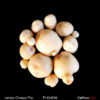
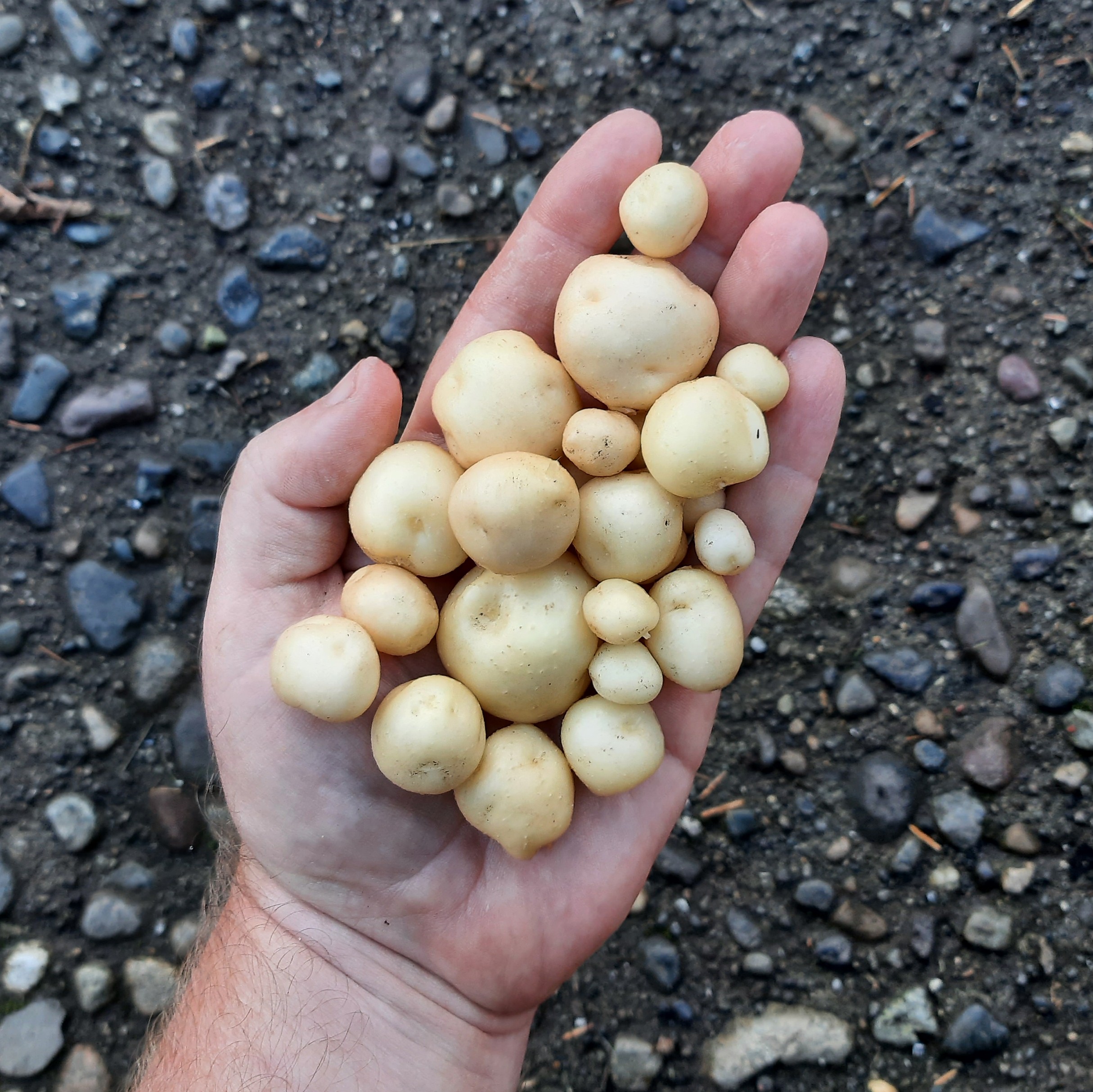
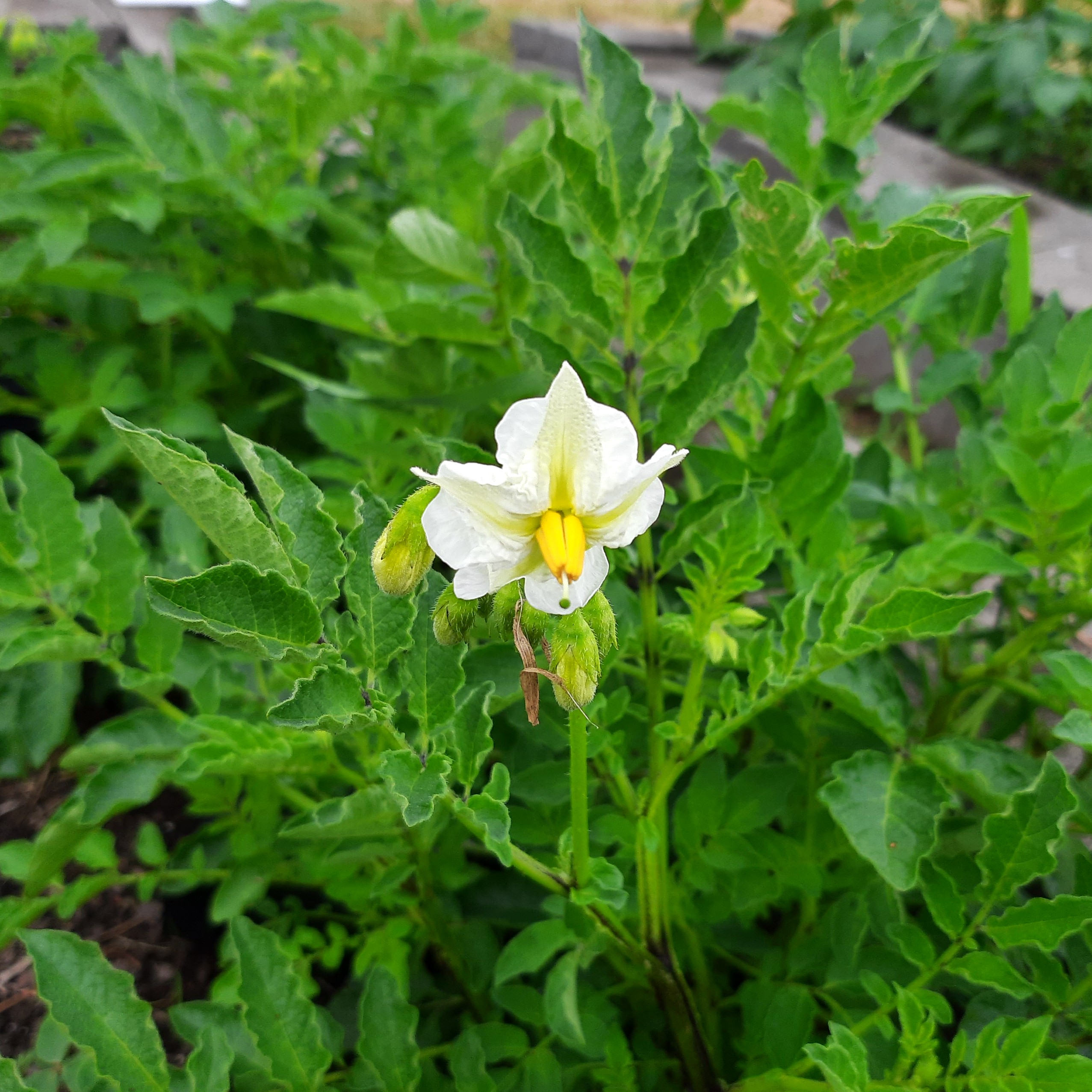
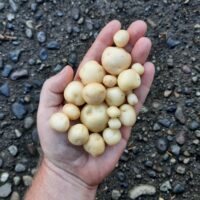
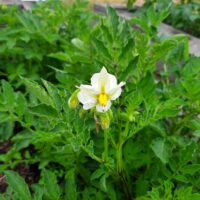
Reviews
There are no reviews yet.